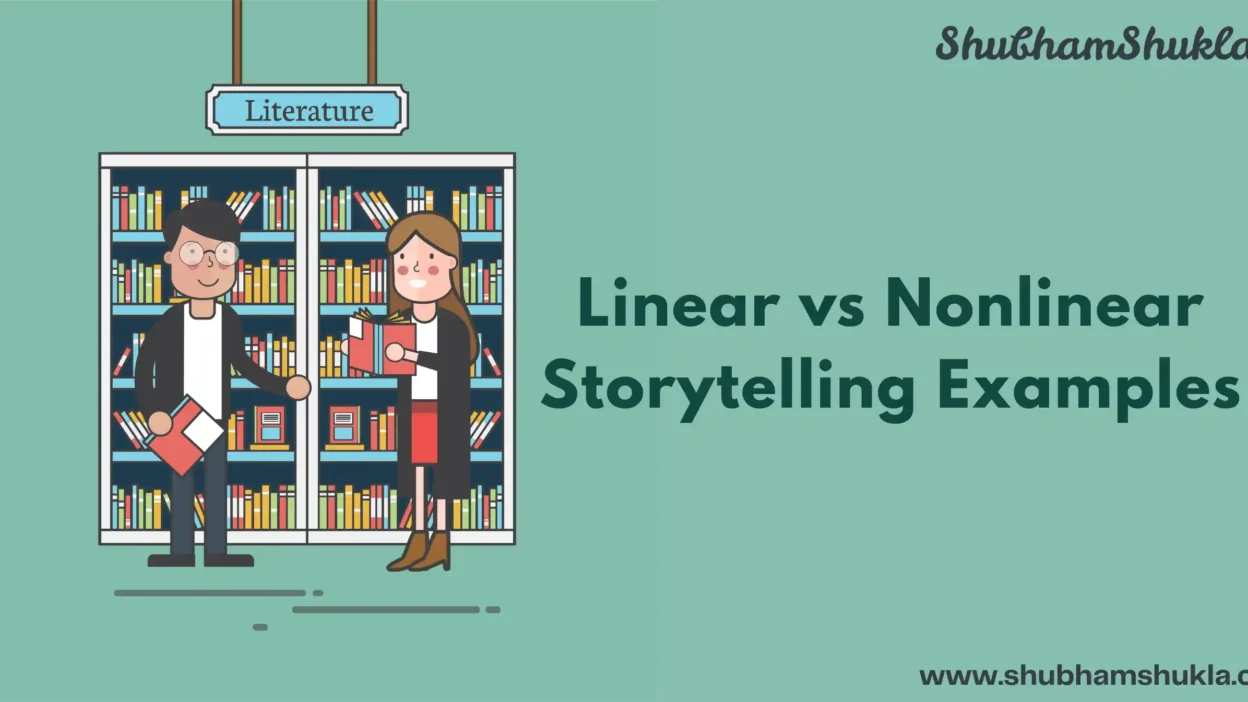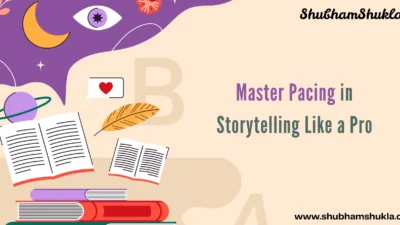If you’ve ever sat down to outline a story and found yourself wondering, “Should I tell this in order, or can I play with time?” — you’re not alone. Every storyteller eventually faces the question of structure. And understanding the difference between linear vs nonlinear storytelling examples can help you choose the right tool for the emotional and narrative impact you’re aiming for.
Some stories glide smoothly from beginning to end. Others twist, jump, and loop through time, teasing the reader with pieces of the puzzle until it all clicks into place. Both approaches can be incredibly powerful — when used with purpose.
Let’s explore what each structure looks like in practice, and how you can decide which is best for your story.
- What Is Linear vs Nonlinear Storytelling?
- Great Linear Storytelling Examples That Just Work
- When Nonlinear Storytelling Brings Stories to Life
- Choosing the Right Structure for Your Story
- In My Own Experience, I Found That…
- What Readers Love (and Sometimes Struggle With)
- Conclusion: Let Your Story Decide
- FAQ – Linear vs Nonlinear
What Is Linear vs Nonlinear Storytelling?
In the simplest terms, linear storytelling follows a chronological path. Think of it like a train track — the story starts at Point A, travels through B and C, and ends at D. Events unfold in the order they happen.
Nonlinear storytelling, on the other hand, isn’t bound by time. It skips around — from present to past, from future to memory. Imagine a story like a collage or mosaic: scenes arranged out of order, yet forming a complete picture by the end.
You’ll find countless linear vs nonlinear storytelling examples across books, films, and shows. Each structure creates a different emotional journey for the audience.
You may also read: Small Roles, Big Impact: Writing Scene Characters That Matter
Great Linear Storytelling Examples That Just Work
Some of the most beloved stories are linear — and for good reason. A straightforward structure allows readers to become deeply invested in a character’s journey without confusion or timeline shifts.
Take The Hunger Games, for example. Katniss’s story unfolds from the Reaping to the Arena to the Capitol’s aftermath, one event following the next. This linear format keeps the tension building steadily. Another classic? Charlotte’s Web. It’s simple, sweet, and powerful — largely because it moves in a straight line.
In these linear vs nonlinear storytelling examples, linearity supports emotional arcs. You feel the stakes rise as the plot moves forward. You grow alongside the character.
And for many stories — especially coming-of-age, hero’s journey, or procedural tales — that kind of steady narrative is exactly what readers crave.
When Nonlinear Storytelling Brings Stories to Life
But let’s not discount the magic of nonlinear narratives.
One of the most famous nonlinear storytelling examples is Pulp Fiction. Tarantino’s masterpiece jumps across timelines, introducing characters and plots out of order. But it works — because it builds suspense and forces the viewer to actively piece the story together.
In books, The Time Traveler’s Wife explores love, loss, and memory through time jumps. The structure is essential to the emotion. You can’t tell that story linearly and get the same depth.
Another favorite? Slaughterhouse-Five by Kurt Vonnegut. Billy Pilgrim becomes “unstuck in time,” and the reader experiences war, peace, death, and alien abduction — all in disjointed but deliberate fragments.
These linear vs nonlinear storytelling examples prove that structure shapes not just the plot, but also how the reader feels it.
You may also like: Character Arc: How Great Stories Make Characters (and Readers) Evolve
Choosing the Right Structure for Your Story
So how do you know which storytelling structure is best for your book or idea?
Linear storytelling is a great fit when your plot builds momentum through clear cause and effect. If you want to track a character’s transformation over time or maintain tight pacing, stick with linear.
But if you’re writing about memory, trauma, love, mystery — anything emotionally layered or thematically complex — nonlinear might be your friend. It allows you to reveal information slowly, build intrigue, or show how moments connect across time.
The important thing is to use structure with intention. Linear vs nonlinear storytelling examples show us that the “best” format is the one that best serves the heart of your story.
In My Own Experience, I Found That…
…experimenting with structure can breathe new life into a stale draft.
I once wrote a story about a girl discovering her father’s secrets after his death. I started linear — funeral, discovery, flashback — but it felt flat.
Then I reordered everything. I opened with her confronting an estranged sibling, then jumped to the past, then the funeral, then a letter her father left behind.
Suddenly, the emotional weight hit harder. Readers were uncovering the truth with her instead of after her. That moment taught me that structure isn’t just about flow — it’s about feeling.
So if your story isn’t landing? Try rearranging it. Cut it up, tape it back together. You might surprise yourself.
You may also like: How to Introduce a Character (Without Losing Your Reader)
What Readers Love (and Sometimes Struggle With)
Readers are smart — but they also have preferences. Many love the cozy immersion of a linear plot. Others thrive on the intellectual puzzle of nonlinear storytelling.
But every reader appreciates clarity. Even the wildest nonlinear tale must give enough breadcrumbs to follow. And even the most traditional linear plot needs emotional beats to stay engaging.
When studying linear vs nonlinear storytelling examples, notice how the best ones — in either camp — respect the reader.
They don’t confuse for the sake of being clever. They make every timeline jump, scene order, or flashback matter.
Conclusion: Let Your Story Decide
In the end, story structure isn’t about being fancy or traditional. It’s about what serves your narrative best.
Whether you’re a fan of tightly plotted linear arcs or love the freedom of nonlinear experiments, the key is intentionality. Don’t just pick a structure — let the story pick it.
As you explore different linear vs nonlinear storytelling examples, ask yourself: What emotional journey do I want my reader to take? How does time affect tension? Revelation? Character growth?
And most importantly — have fun. Writing is discovery. Play with the pieces until the picture feels right.
FAQ – Linear vs Nonlinear
Q1: Can I mix linear and nonlinear elements in the same story?
Absolutely! Many stories use a mostly linear plot but include flashbacks, dreams, or alternate timelines. The key is clarity and consistency.
Q2: Is nonlinear storytelling harder to write?
It can be, since you’re managing more threads and reader expectations. But with a solid outline and revision plan, it’s very doable — and often rewarding.
Q3: What genres use nonlinear storytelling the most?
Literary fiction, mystery, sci-fi, and psychological thrillers often play with nonlinear structures. But any genre can use it creatively.
Q4: Should I try both styles as a writer?
Definitely. Exploring linear vs nonlinear storytelling examples in your writing helps you grow and find your voice. You may be surprised what structure suits you best.



